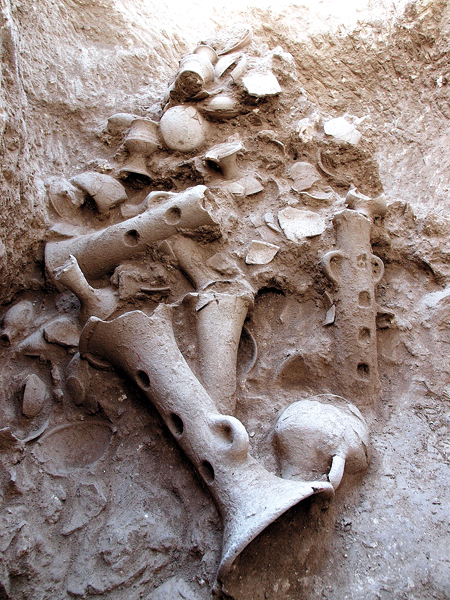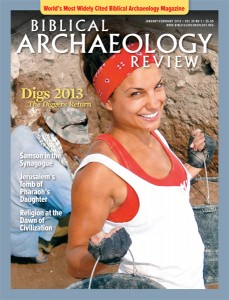Strata: Ancient Worship in Israel—Before the Israelites
A new exhibit of a large treasure trove at Haifa’s National Maritime Museum is offering a glimpse of Canaanite cultic practices that existed when the Israelites arrived in the Holy Land.
The cache of more than 200 cult objects was unexpectedly discovered in a favissa—a repository for cultic items—during an excavation near Haifa at Tel Qashish led by archaeologists Uzi Ad and Dr. Edwin van den Brink on behalf of the Israel Antiquities Authority. The favissa, a hollow in the bedrock, was excavated in preparation for the installation of a gas pipeline.

The extraordinary cultic collection—which the excavators date to the 13th century B.C.E.—included nearly a hundred well-preserved intact objects, as well as another 100–150 broken items. Among the cultic vessels were goblets, including one with a human face, cult stands, incense burners, libation bowls, tableware and storage jars. Some of the objects were produced locally while others came from Cyprus and Mycenae, Greece, indicating flourishing trade and similar cultic practices across the eastern Mediterranean.
Already a library member? Log in here.
Institution user? Log in with your IP address.

